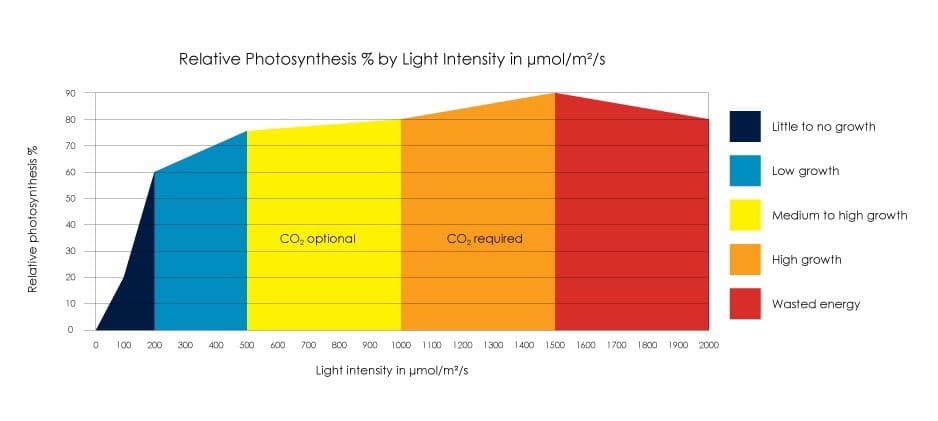The previous post offered an introduction to PAR and PPFD. The question is how much is enough light and when is it too much. Supplying your plant canopy with an even and adequate amount of usable light is vital, but supplying your plants with more than they need can be a waste of energy and money. This can also lead to negative impacts on your plants.
All plants are different but can be placed into categories based on light needs per day. This is known as Daily Light Integral (DLI). DLI is the amount of PAR received each day as a function of light intensity and duration. This is known as moles per square meter per day (umol/m2/d). A direct correlation between how much PAR your plants are exposed to and for how long each day. Generally, the vegetative stage of plant growth requires 16 – 24 hours of light per day, while the flowering stage requires up to 12 hours of light per day.
The right amount of light using DLI
The required amount of photon flux density (PPFD), can be calculated from the DLI. Growing large flowering cannabis plants require a DLI of about 60 at the very high end.
Plants have an optimal amount of light that they need to receive in a day. They can receive that light in a shorter time period at a more intense PPFD or they can receive it in a longer time period, at a less intense PPFD. The required DLI is known (60) and the hours of light is known (18 or 12), then there’s a set PPFD that you’re going to target.
x PPFD = 60 DLI / (18 hours x 3600 seconds) = 926 umol/m2/s
The right amount of light for growing cannabis
Below is a general breakdown of how much PPFD is needed for plants to thrive during the different stages of growth.
| Sustainable Veg | Production Veg | Flowering Plant |
| 50 – 200 umol/m2/s | 150 – 400 umol/m2/s | 400 – 1 000 umol/m2/s |
These numbers vary based on type of plant and environmental variables like the introduction of carbon dioxide into the environment. 500 – 1000 umol/m2/s has been noted as an optimum for growth. Less than 500 umol/m2/s and growth will be slow. Plants require additional CO₂ to utilise more than 1 000 umol/m2/s.

Chandra et. al. concludes that peak growth of Cannabis Sativa takes place at 1 500 umol/m2/s at 30ºC when supplementing with CO₂. Growth steadily decreases with more light or at higher temperatures, resulting in wasted energy.
References in order of appearance:
- Next Light White Paper – “Helping Navigate the Ever Changing Grow Light Market”
- Fluence Bioengineering White Paper – “High PPFD Cultivation Guide”
- Suman Chandra, Hemant Lata, Ikhlas A. Khan and Mahmoud A. Elsohly – “Photosynthetic response of Cannabis sativa L. to variations in photosynthetic photon flux densities, temperature and CO2 conditions”
- KIS Organics Cannabis Cultivation and Science Podcast Episode 48
